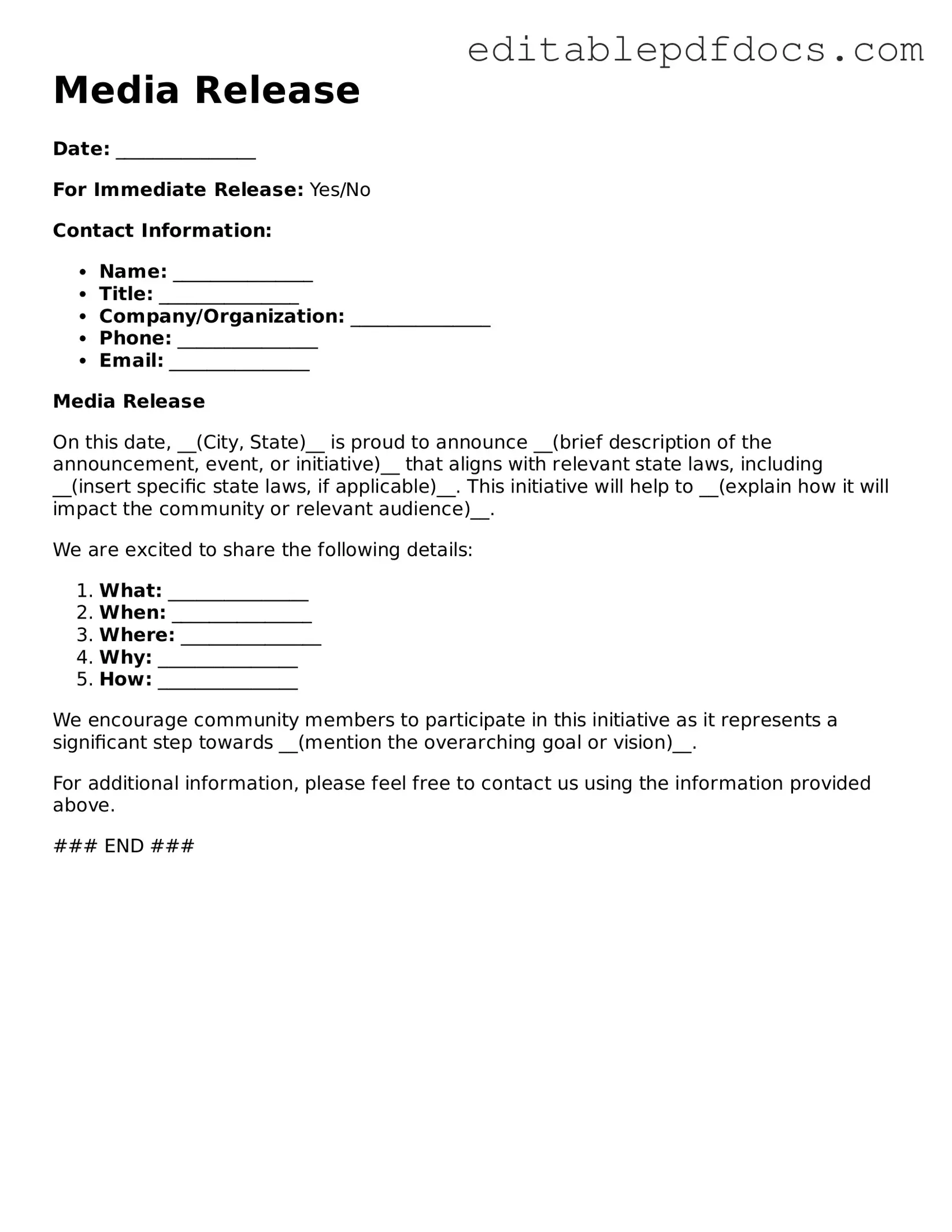The Media Release form serves as a crucial document in various contexts, particularly in media and entertainment industries. It allows individuals or organizations to grant permission for their likeness, voice, or other identifiable attributes to be used in promotional materials, publications, or broadcasts. This form typically outlines the scope of the release, specifying how the media will be used and for what duration. It also addresses the rights of the individual, ensuring that they understand their consent is voluntary and that they relinquish certain rights to the media produced. Additionally, the form may include provisions regarding compensation, if applicable, and the ability to revoke consent under specific circumstances. By utilizing a Media Release form, parties can protect themselves legally while fostering clear communication about the use of personal images or content, ultimately leading to a smoother collaboration process.
